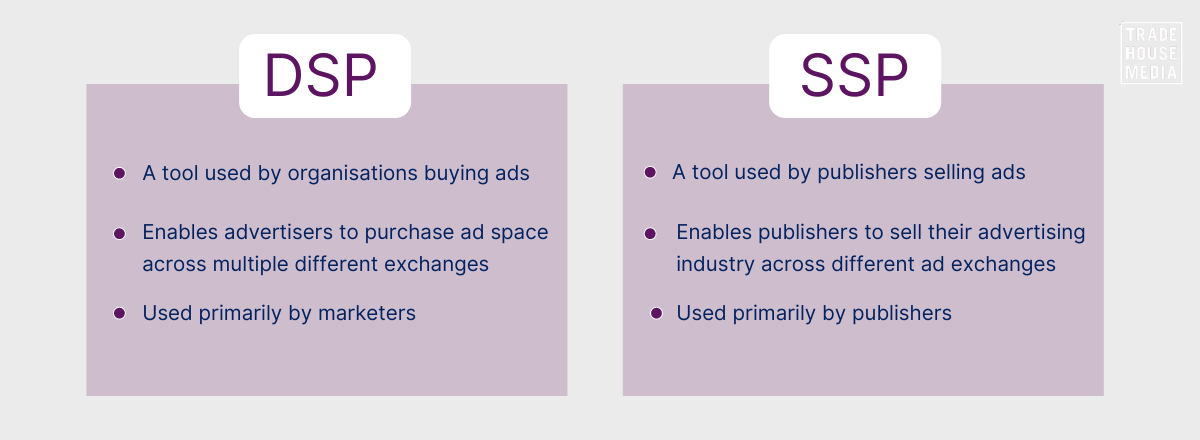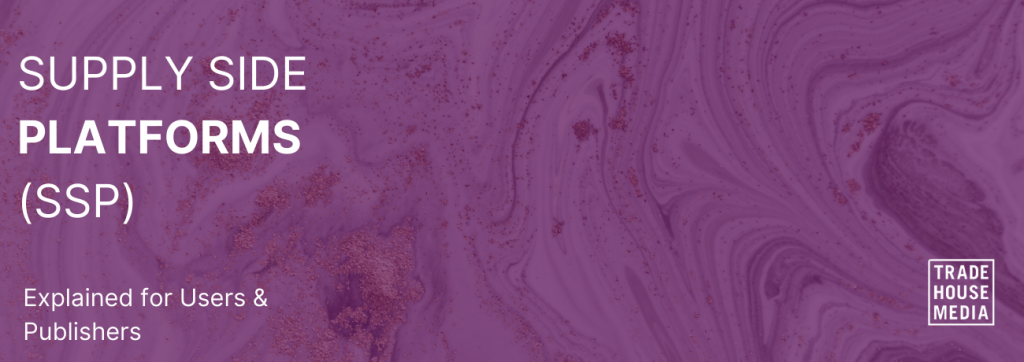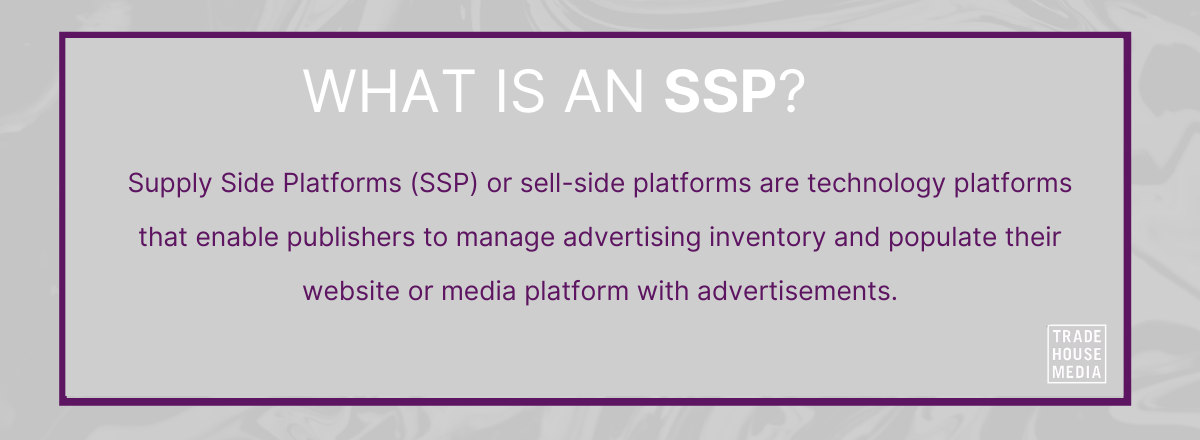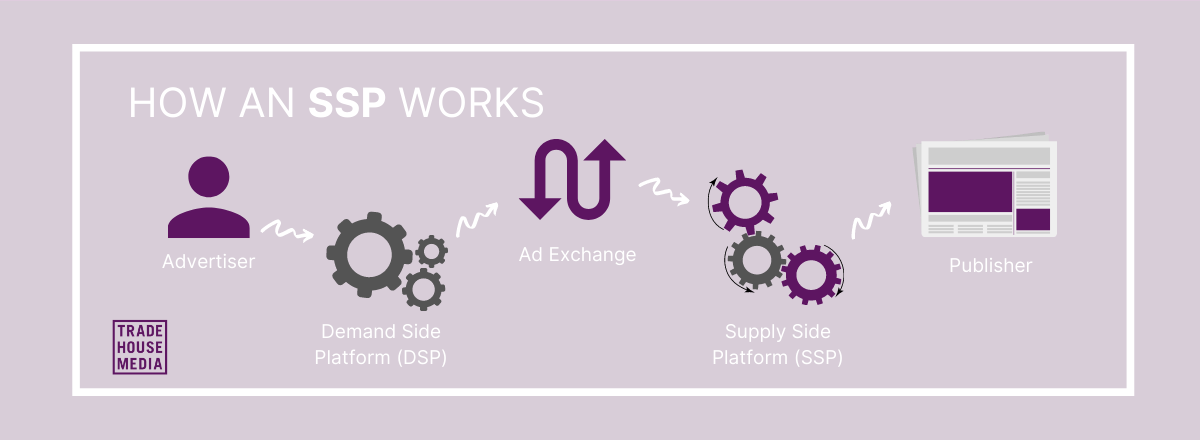Supply Side Platforms (SSP), or sell-side platforms, are technology platforms that enable publishers to manage advertising inventory and populate their website or media platform with advertisements.
By managing advertising space in real-time, publishers are able to provide more accurate, granular insight into ad performance to advertisers.
The Birth of SSPs
Historically, publishers used ad networks to connect with advertisers and sell ad inventory. Over time, however, as publishers diversified their advertising strategy and started to use a broader spectrum of advertising networks – the waters were muddied. Keeping track of different ad networks became increasingly difficult and publishers struggled to keep track of which ad network would move the most inventory at the best price.
To combat the problem and simplify the process of matching advertisers with publishers, new AdTech platforms known as ‘network optimisers’ emerged. When real-time bidding (RTB) was introduced, algorithms for prediction, budgeting, and pacing changed which resulted in network optimisers gradually evolving into Supply Side Platforms (SSPs).
Why Do We Need Supply Side Platforms?
A supply side platform is designed to improve advertising efficiency and streamline the process of the supply and distribution of advertising inventories. SSPs make it easier for publishers and digital media owners to sell advertising space in automated auctions.
In 2021, SSPs play a key role in real-time bidding by allowing publishers to connect their inventory to advertising exchanges and demand side platforms (DSP). By offering advertising real estate to a broader audience of advertisers, publishers are able to maximise their profit and ensure inventory is filled.
DSP vs. SSP – What’s the Difference?
Let’s start with a bit of housekeeping. The terms SSP and DSP are often thrown around in the same sentence. So before we delve into the nitty-gritty, let’s clear the air with some SSP vs. DSP basics.
Demand Side Platforms (DSP) and Supplied Side Platforms (SSP) are often (incorrectly) used as interchangeable descriptors when it comes to the process of buying and selling ad space on various media platforms.
Demand side platform is a tool used by organisations buying ads (typically agencies and brands) to identify advertising opportunities. A DSP is a platform where agencies and buyers can purchase ads across several different exchanges in one place – kind of like an Amazon-style platform for advertisers.
Think about it like this; a DSP is the inverse of an SSP.
Where a DSP enables advertisers to purchase ad space across multiple different exchanges, an SSP enables publishers to sell their advertising industry across different ad exchanges.
In the same way that a publisher uses an SSP to make their ad inventory more accessible and receive the best possible pricing, a DSP allows advertisers to browse all of their advertising potentials to scope out the best possible fit.

The easiest way to remember is that demand side platforms (DSP) are used by marketers, whereas supply side platforms (SSP) are used by publishers. Both platforms utilise similar technology, however, they serve an opposing audience.
How Does an SSP Interact With a DSP?
An SSP and DSP interact to deliver advertising that is tailored towards the unique profile of users. The process for an SSP and DSP interacting looks like this:
1. The user enters a website or equivalent media platform
2. Unique user characteristics are passed to the SSP
3. The SSP offers the impression directly to DSPs or (in other cases) to affiliated ad exchanges
4. The DSP then reviews the impression to analyse whether it is the right fit for the advertisers’ settings. If the DSP identifies a good fit, it will bid on the impression through an ad exchange.
5. The SSP will then interpret and sort all of the bids from DSP partners to determine the highest bid.
6. The highest bidder from the DSP is then rewarded with ad placement
As you might imagine, the whole process is completely seamless which means that website and media visitors are paired with tailored advertisements from the moment they start browsing a website or platform.
The Anatomy of a Supply Side Platform
Ready to understand how the SSP ecosystem works? Let’s peel back the curtain to reveal what the anatomy of an SSP really looks like.
Backend
In order for the system to be functional and accessible, there needs to be backend infrastructure in place. Typically, an SSP will be hosted on the most widely utilised and comprehensive cloud platform – Amazon Web Services (AWS). Cloud platforms allow for multiple points of access in a global market and ensure very little (if any) downtime of the platform.
Access Integration
SSPs will integrate with compatible AdTech software and platforms to allow publishers and advertisers to access and view inventory. For example, Demand Side Platforms (DSP), Ad Servers, and Ad Exchanges will all integrate and communicate with an SSP.
Approved Ad Exchange
Ad exchanges facilitate the buying and selling of ads between publishers and advertisers. Progressive advertising technology means that many SSPs now enable ad ex-exchange functionality which allows advertisers (via DSP) and publishers (via SSP) to connect within a single ecosystem.
Ad Tracking & Reporting
Ad trackers are used to collect data about the demographics and behaviours of a publisher’s web audience. This data is exported to create a user profile and reporting database which enables more informed (and effective) ad strategies.
Publishers can use ad tracking data to generate reports, view campaign insights, and understand the efficacy of their ad strategies.
Wrapping Up
SSP, DSP, Advertisers, Publishers, symmetrical harmony? If you’re struggling to make sense of it all, don’t fret – there’s a lot to take in. Here is what you really need to understand.
An efficient supply side platform (SSP) enables publishers to deliver relevant advertisements that enhance on-site or on-platform user experience. An SSP empowers publishers to keep unsavoury or unwanted advertising messages from appearing to users and ensures that on-platform advertising is less intrusive and tailored towards users.
Looking to find an SSP that works for you? Trade House Media is the United Kingdom’s leading ad tech company with senior expertise across the technology, publisher, and agency side of the advertising process. Get in touch with the team to find out how you can maximise your advertising real estate with customised ad tech solutions.



